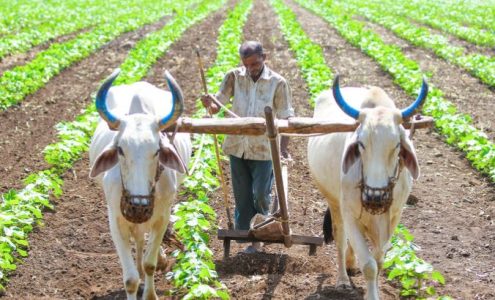The agricultural sector has witnessed significant advancements in recent years, with tools like the farmer registry becoming central to enhancing its efficiency.
Designed to streamline processes, these registries are transforming the way governments interact with farmers.
In this article, we’ll explore the concept of a farmer registry, its importance for modern agriculture, and how it empowers small-scale farmers.
Additionally, we’ll examine its role in streamlining agricultural policies, leveraging technology, and promoting food security and sustainability.
What is Farmer Registry?

A Farmer Registry is a comprehensive database that contains information about farmers, their landholdings, crop patterns, and farming practices.
It is a critical tool for governments and agricultural bodies to monitor, plan, and implement various agricultural policies effectively.
The registry typically includes data such as:
- Farmer’s name, address, and demographic details
- Land size, soil type, and geographic location
- Crop types and yield data
- Use of agricultural inputs like fertilizers and pesticides
This system ensures transparency in subsidy distribution, helps in planning disaster relief during crop failure, and streamlines agricultural programs.
Governments worldwide are adopting farmer registries to ensure equitable access to resources and improve agricultural productivity.
A robust farmer registry not only empowers farmers but also enhances food security and promotes sustainable farming practices.
Why Is Farmer Registry Essential in Modern Agriculture?
Modern agriculture faces challenges like climate change, resource scarcity, and population growth. A farmer registry plays a pivotal role in addressing these issues by:
- Ensuring proper distribution of subsidies and financial aid
- Helping policymakers understand regional agricultural patterns
- Providing real-time data for effective disaster management
- Facilitating targeted training and extension services
For example, the Pradhan Mantri Kisan Samman Nidhi (PM-KISAN) scheme in India uses farmer registry data to transfer direct benefits to farmers. This transparency ensures that only eligible farmers receive assistance, reducing corruption and inefficiency.
In the long run, a well-maintained farmer registry can boost productivity, reduce waste, and improve farmers’ livelihoods by providing them with the necessary tools and resources tailored to their specific needs.
How to Do Farmer Online Registration?

Farmers in India can register online through state-specific portals or central government platforms like PM-Kisan or Agristack. Here’s a step-by-step guide to online registration:
- Visit the Portal: Farmers can access their state’s agricultural department website or a central government portal. For example, the UP Farmer Registration portal offers a user-friendly interface.
- Enter Personal Details: Provide information such as name, Aadhaar number, mobile number, and address.
- Submit Land Details: Input the size of the land, survey number, and other relevant information.
- Upload Documents: Necessary documents like land ownership proof and identity cards should be uploaded.
- Verification and Approval: After submission, officials verify the data, and upon approval, farmers receive a unique registration number.
This digital process ensures easy and efficient enrollment, eliminating the need for manual paperwork and reducing delays in receiving benefits.
Which State Has Farmer Registry System in India?
Several states in India have implemented farmer registry systems to streamline agricultural operations and improve governance.
These systems enable efficient resource allocation, ensure transparency in subsidy distribution, and provide real-time data for better decision-making.
Key states with robust farmer registry systems include:
- Uttar Pradesh: The UP Farmer Registry Portal is a leading example, allowing farmers to access subsidies, crop insurance, and other benefits. It streamlines data collection, reducing manual errors and ensuring only eligible farmers receive assistance.
- Tamil Nadu: This state offers a digital registry system that tracks land ownership and crop patterns, providing valuable insights for agricultural planning and disaster management.
- Karnataka: Karnataka operates the FRUITS (Farmer Registration and Unified Beneficiary Information System) platform, which integrates Aadhaar, land records, and bank account details, ensuring transparency and easy access to government schemes.
- Maharashtra: Maharashtra’s registry focuses on tracking drought-affected areas and distributing relief packages promptly. It also helps in monitoring the implementation of state-specific agricultural schemes.
- Gujarat: Gujarat has developed a farmer registry system that links farmers with real-time market data, improving their access to fair pricing and financial aid.
The adoption of farmer registries varies across states due to differences in technological infrastructure, administrative capacity, and policy priorities.
However, states like Uttar Pradesh, Karnataka, and Gujarat have been pioneers, showcasing the potential of these systems to revolutionize Indian agriculture.
How Does Farmer Registry Help in Streamlining Agricultural Policies?

A well-maintained farmer registry is the backbone of effective agricultural policy formulation and implementation. With precise and real-time data, policymakers can design targeted interventions that cater to the specific needs of farmers and regions.
Key benefits of a farmer registry in policy-making include:
- Efficient Resource Allocation: With accurate farmer and landholding data, governments can distribute fertilizers, seeds, and other inputs to the right beneficiaries, minimizing waste and ensuring equitable access.
- Disaster Management: Farmer registries help identify regions affected by droughts, floods, or pest outbreaks, enabling quick and targeted disaster relief measures.
- Scheme Monitoring: Registries allow authorities to track the impact of agricultural schemes, ensuring they meet their objectives and identifying areas for improvement.
For instance, the National Agriculture Market (eNAM) leverages farmer registry data to connect farmers with buyers, reducing the role of middlemen and ensuring better market prices.
By integrating data across departments, farmer registries eliminate redundancies, streamline processes, and ensure that agricultural programs are efficient and impactful.
What Are the Key Features of an Effective Farmer Registry System?
An effective farmer registry system should be designed to meet the diverse needs of farmers, policymakers, and stakeholders. Here are the essential features:
- Comprehensive Data Collection: Captures all critical details, including farmer demographics, landholdings, crop patterns, and input usage.
- Interoperability: Integrates seamlessly with other systems, such as land records, weather databases, and financial institutions.
- User-Friendly Interface: Ensures that farmers, even those with limited technical knowledge, can easily access and update their information.
- Secure and Transparent: Implements robust data protection measures to ensure privacy and prevent unauthorized access or misuse.
- Real-Time Analytics: Uses advanced tools like geotagging, remote sensing, and AI to provide actionable insights, such as crop yield predictions and soil health analysis.
These features make the registry an indispensable tool for both governments and farmers, enabling data-driven decision-making and efficient resource management.
How Does Farmer Registry Empower Small-Scale Farmers?

Small-scale farmers constitute a significant portion of India’s agricultural workforce but often lack access to resources and support. A farmer registry bridges this gap by providing tailored services and benefits.
Here’s how it empowers small-scale farmers:
- Direct Access to Subsidies and Aid: Farmers receive financial assistance directly into their bank accounts, reducing delays and eliminating corruption.
- Targeted Training Programs: Based on the data, authorities can offer specific training sessions on modern farming techniques, water conservation, and pest management.
- Participation in Government Schemes: Smallholders can enroll in crop insurance programs, ensuring financial security during crop failures.
Research indicates that regions with effective farmer registries experience a significant improvement in smallholder productivity, leading to increased income and better living standards.
What Role Does Technology Play in Farmer Registration Systems?
Technology is the cornerstone of modern farmer registration systems, enabling efficient data collection, management, and analysis. Key technologies include:
- Blockchain: Provides secure and immutable data storage, ensuring that farmer information is protected and tamper-proof.
- Geospatial Mapping: Offers detailed insights into soil health, crop suitability, and water availability, enabling precision farming.
- AI and Machine Learning: Helps in predictive analytics, such as forecasting weather patterns and crop yields, to optimize resource allocation.
- Mobile Applications: Empower farmers to register, update information, and access government schemes conveniently through their smartphones.
For instance, Karnataka’s FRUITS platform integrates Aadhaar and land records, offering a transparent and seamless registration process. Such technological advancements have made farmer registries more efficient, reliable, and accessible.
How Does Farmer Registry Contribute to Food Security and Sustainability?

Farmer registries are pivotal in achieving food security and promoting sustainable agricultural practices.
Here’s how:
- Early Warning Systems: Registries provide data to predict and mitigate the impact of crop failures due to pests, diseases, or climate change.
- Disaster Relief: During natural calamities, accurate data enables the timely distribution of aid and ensures that no farmer is left out.
- Sustainable Practices: By analyzing registry data, governments can promote eco-friendly practices such as crop rotation, organic farming, and efficient water use.
In the long term, these initiatives help maintain stable food supplies, reduce wastage, and protect the environment.
What Are the Challenges in Implementing Farmer Registries?
Despite its numerous benefits, the implementation of farmer registries is not without challenges:
- Digital Literacy: Many farmers, especially in remote areas, lack the technical skills to navigate online systems.
- Data Accuracy Issues: Outdated or incorrect data can undermine the effectiveness of registries.
- Infrastructure Gaps: Poor internet connectivity in rural areas hampers the registration process.
- Resistance to Change: Some farmers are hesitant to adopt new technologies, fearing privacy violations or misuse of data.
Addressing these challenges requires a multi-pronged approach, including robust infrastructure development, user-friendly platforms, and awareness campaigns to build trust and confidence.
How Can Governments Improve the Adoption of Farmer Registry Systems?

To encourage wider adoption of farmer registries, governments can:
- Conduct Awareness Drives: Organize workshops and training sessions to educate farmers about the benefits and processes of registration.
- Offer Offline Registration Options: For farmers with limited internet access, provide alternative methods like mobile vans or manual registration at local centres.
- Incentivize Registration: Offer discounts on agricultural inputs or additional financial benefits to farmers who register early.
- Provide Robust Technical Support: Establish helplines and support centres to assist farmers in resolving technical issues.
Additionally, partnerships with private technology firms can help create innovative and user-friendly platforms, ensuring that all farmers, regardless of their literacy or technical skills, can benefit from the system.
Conclusion
A farmer registry is a vital tool for modernizing agriculture, ensuring that farmers receive timely support and resources. By collecting and analyzing data, it bridges the gap between policymakers and farmers, fostering transparency and efficiency.
While challenges in implementation exist, the potential of farmer registries to transform agricultural practices and empower farmers is immense. Governments must prioritize their adoption and improve awareness to achieve sustainable growth in the sector.
FAQs
What is the main purpose of a farmer registry?
A farmer registry collects data about farmers, helping governments allocate resources and implement agricultural policies effectively.
How does a farmer registry benefit small-scale farmers?
It provides smallholders with direct access to subsidies, crop insurance, and targeted training programs.
What role does technology play in farmer registries?
Technology ensures secure data storage, real-time updates, and predictive analytics for better decision-making.
Can farmers register offline in case of limited internet access?
Yes, many states provide offline registration options through local centers or mobile units.
How can governments promote the use of farmer registries?
Governments can offer incentives, conduct awareness drives, and collaborate with tech firms to improve adoption rates.




